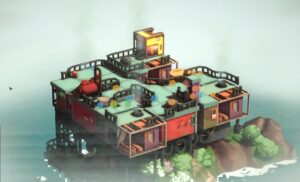PileUp! Review
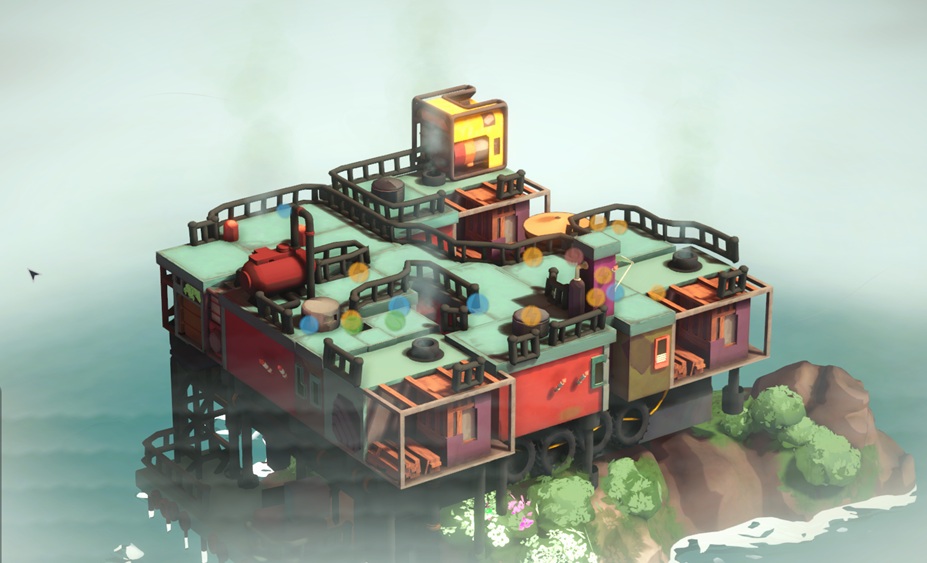
City builders are traditionally expected to consist of huge map landscapes, micro and micromanaging areas with facilities and living spaces, numerous strategic decisions, and often complicated socio-economic systems.
Not PileUp. Well, yes, it does include a lot of strategic decisions and micro/macro management, plus all the expected complicated systems of a city builder, but without the seriousness of it. The people of your city do get unhappy, and they will suffer, making the game not always that cheerful. But PileUp is so cleverly made that you can do all that in a chill, cozy mood, thanks to its cute, beautiful, cartoonish graphics.
What’s unique in this title is that you don’t expand on a large area of land; instead, you need to pile up (you see what they did there). In other words, you apply all the strategic decisions you’d normally make in a city builder — but vertically.
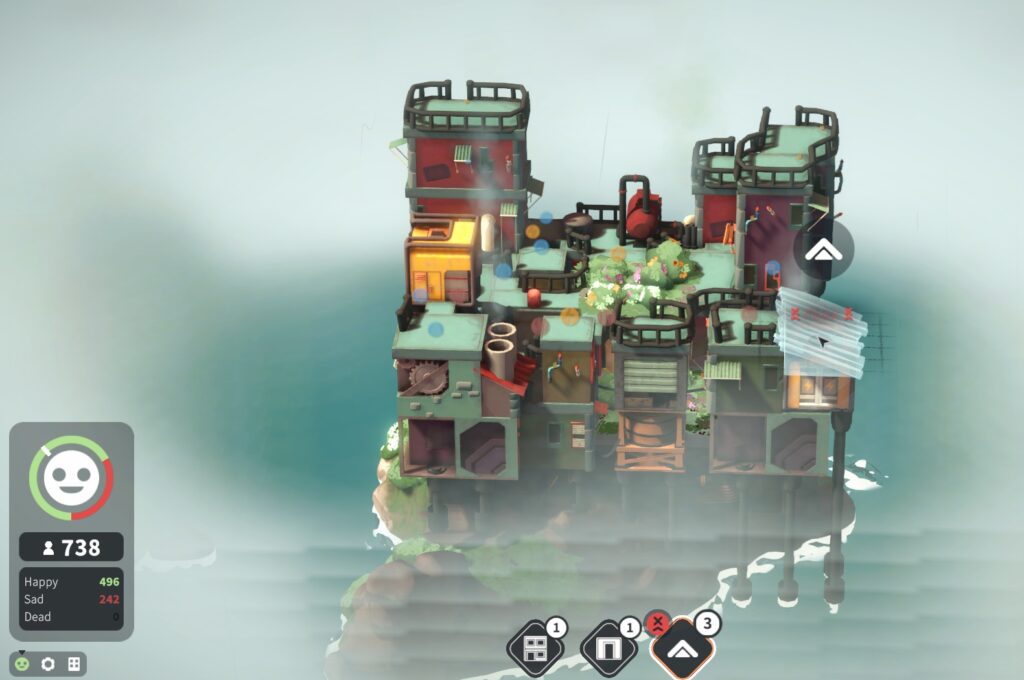
The game offers a great tutorial, which, if you are a newcomer to the genre, I recommend you follow. It helps you familiarize yourself with the game controls and the mechanics of building development.
Since we’ve established that you need to build up vertically, it’s not a big surprise that the starting area seems like a small, square-shaped piece of land that couldn’t fit more than two houses. But it does. You just have to place everything in strategic positions for maximum capacity and efficiency.
The controls are easy and what one would expect. Rotate the map, rotate the buildings, change your point of view to get a better look at your progress, all with easy-to-remember keyboard and mouse combinations. But what happens when you really have to build?
Start building
You’ll start with a factory, accompanied by supportive buildings and a variety of houses, from small, almost tiny, to bigger apartment blocks. Of course, with people comes happiness or sadness. The game helps you understand the needs of the population through small bubble icon of different colours, each representing a need, like electricity or water. The closer you build the electricity facility to the bubble, the happier the people will become.
Of course, they need a park. Recreation is important, and in such a tiny, crowded environment, the need for green becomes essential.
Since you pile up your buildings, there are limitations on where you can place a park, as you can’t build anything else on top of it. The game helps you understand that by marking it with the word “peak” as you try to locate it on your tiny map.
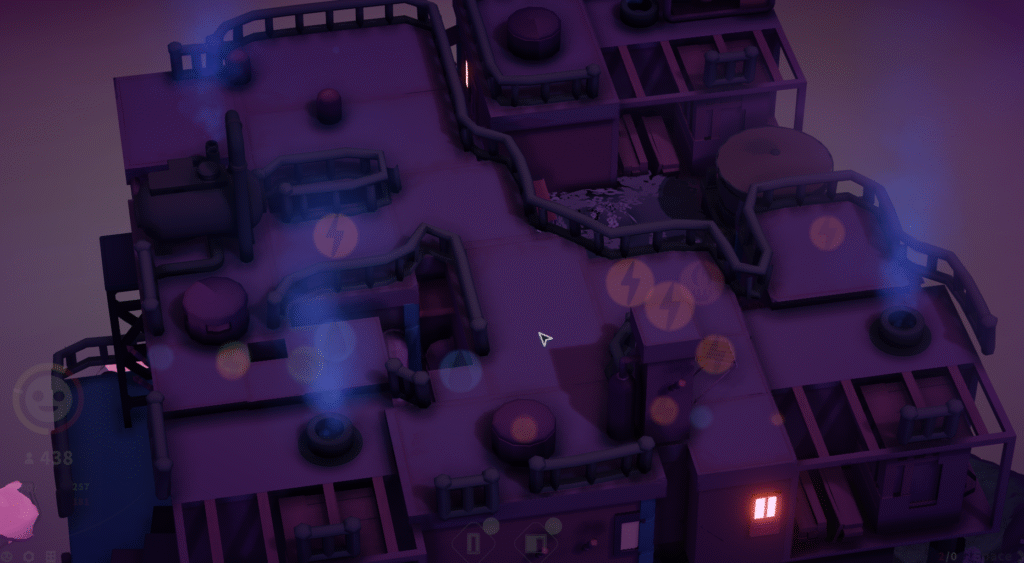
Once you start learning the limitations and flexibilities of the game, the strategic part kicks in, with a slice of coziness thanks to the cute, cartoon-like graphics.
Another constraint to keep in mind is that you can’t put an electric generator next to an ignition-friendly area because it will explode. Don’t worry, the game helps you again by giving you a risk radius as you hover over the map.
Trying to figure out the best strategic positions for each facility in such a small amount of land requires a lot of planning, observation, spatial understanding, and sharp decision-making, as things start to build up vertically rather fast. You may experience an explosion here, and a drop in the happiness of your citizens.
I need to mention that this game has a drawing-cards feeling, as you can’t control the type of buildings you’ll get in each round. They’re kind of random, and I say ”kind of” because you know that a certain number of houses will be generated based on how many house factories you have. But you can’t control the order they’ll be handed to you.
It shouldn’t be a surprise that people don’t feel that happy in such squeezed living conditions, but your goal is to make the best of it. If houses are built nicely (meaning all the walls attach evenly to each other, creating stable structures), with a park nearby and all the necessities of society like electricity, water, and heating, then people can live happily. But can you guarantee things will remain like this when the city gets higher and higher, and more densely populated?
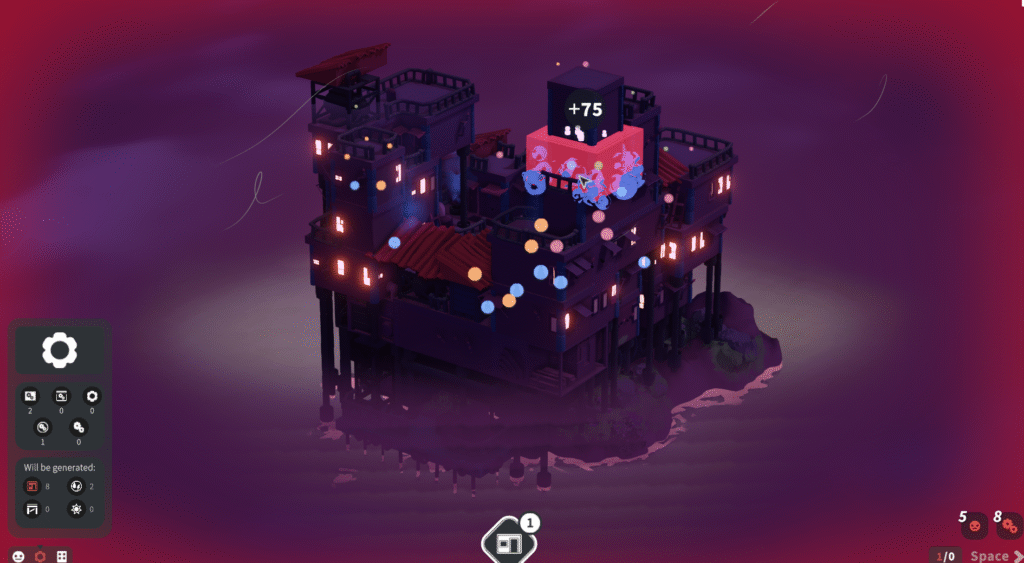
The first stage has a few milestones, and upon reaching them, you unlock more facilities or other bonuses that can make your construction life easier. There’s a happiness meter at the bottom right that tells you how many rounds you have left before you’re expected to lose. Pretty harsh, I know, but it’s a good indicator of how to proceed. Perhaps if you change something, you can buy yourself a few more rounds and finish the first stage successfully.
On my first attempt after the tutorial, I managed to reach a population of 2,645 instead of the 4,000 needed to complete the stage successfully. I wasn’t very strategic in my building, so I was freestyling it, consciously, to see what works and what doesn’t, treating it as my learning process.
On my second round, I was wiser – or so I thought – and I decided on a different strategy. I started building from the outside, covering the corners and perimeter before going inward. It didn’t make that much difference. I managed to survive one more day until my people got angry and started a riot, which marks the end of the game.
Another round, and I managed to go 26 days before I lost, which is typical to manage one more day and then even one more before you lose, as they do have a learning curve. On each round, you learn a new thing, and then another one, and then your perspective changes as you start to understand behaviours and how buildings work best based on where they’re placed.
The game cycles through day and night, and during the night, since everything gets dimmed, it’s harder to identify the grid and all the nooks and crannies of the map, making it easy to miss a good spot that’s more visible during the day. But that’s part of the game. Another difficulty factor is that the more you pile up, the harder it becomes to move the camera as freely as on the lower levels. But this is expected and is what makes the game more challenging as you progress.
PileUp! is an interesting builder game with a cute twist that’s definitely a must-try for fans of the genre.











